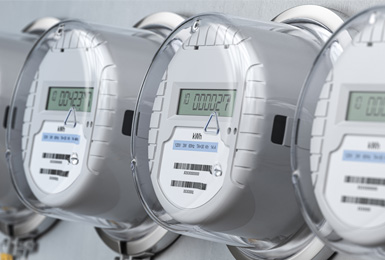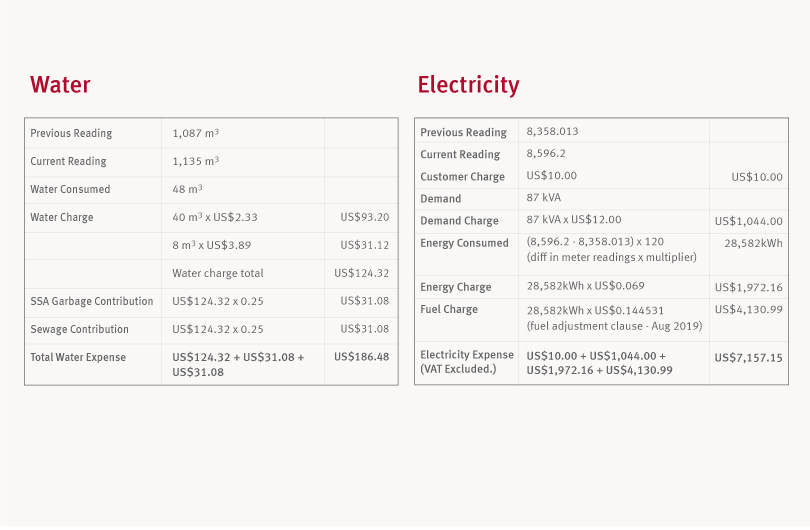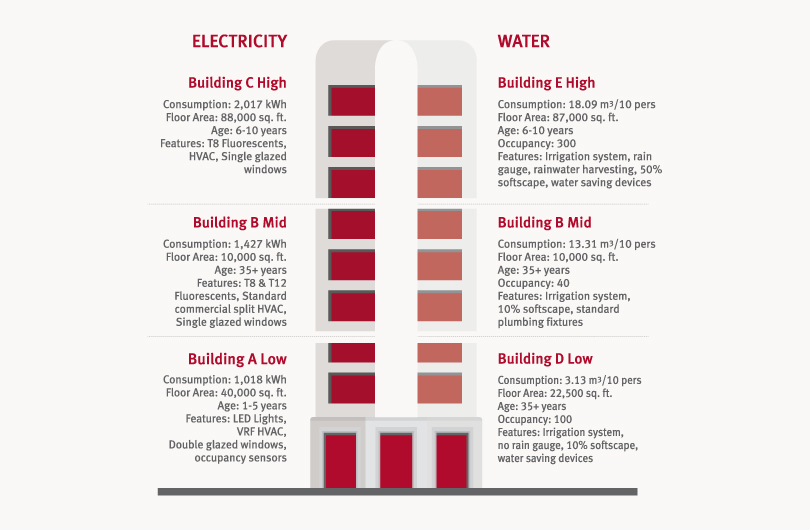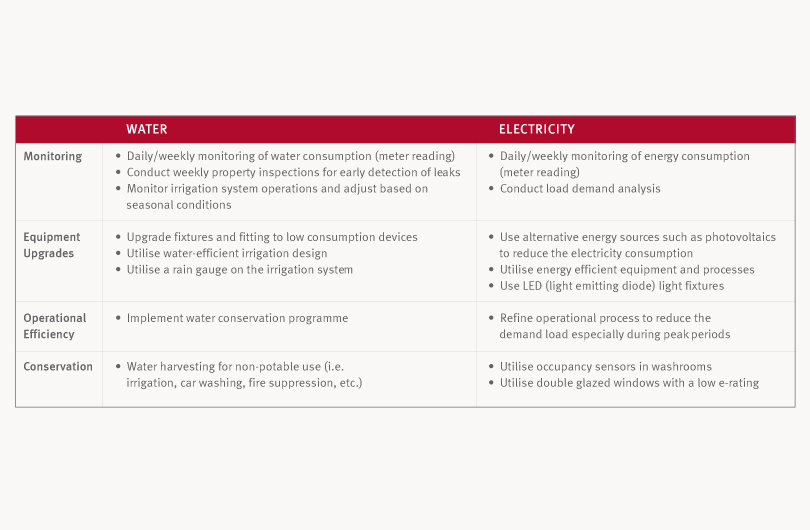
Utilities – You can’t manage what you don’t measure
Utilities account for 11% of the common area maintenance (CAM) expenses in office buildings and can significantly impact the sustainability of the facility. It is therefore important to manage electricity and water consumption to better control the related expenses and achieve corporate sustainability objectives.
Monitoring and measuring utility consumption have proven to reap significant benefits as it gives a better understanding of consumption patterns. By observing such patterns owners can, for example, take advantage of off-peak tariffs or reduce peak demand charges, in the case of electricity.
Focusing primarily on consumption of water and electricity in a multi-storey commercial office building in Barbados we show how these two utilities can be measured and managed.
In a nutshell, reducing your utility consumption can reap significant benefits such as: reduction in wastage, reduced operational expenses, reduced demand on natural resources and reduced environmental impact (i.e. carbon emissions, etc.).
Utility Charges Explained
Before we can determine how best to manage these utilities, we must first understand how these costs are derived. In Barbados, commercial water and electricity costs are derived as follows:
Water

The cost of water is comprised of three components: water consumed, garbage and sewage contribution. The water charge is calculated on a tiered system. In calculating the water expense for a commercial office building, the table shows that 48 m3 of water consumed results in a water expense of US$186.48 as follows:
Electricity
With electricity, the components calculated in the charges are customer charge, demand charge, energy charge and fuel charge. The example below shows that for a commercial office building with Secondary Voltage Power (SVP), no Photovoltaic (PV) system and a multiplier of 120 and a consumption of 28,000 kWh, the total expense is US$7,157.15.
Measuring & Monitoring Utility Consumption
Water and electricity consumption may fluctuate in commercial office buildings for several reasons. It is therefore critical to conduct an investigation to determine the root cause when fluctuations are observed. This would allow for better management and control of consumption.
Some principal causes for changes in water and electricity consumption are leaking fixtures, equipment and supply lines, change in occupancy behaviours/patterns, change in equipment, maintenance works which impact energy/water consumption, aging equipment and poor/lack of maintenance.
Utility Benchmarks

Figure 1 shows the typical electricity ranges for actual commercial office buildings per 1,000 square feet ranging from a low of 1,000 – 2,200 kWh and for water consumption the range is 2.00 m3 to 20.00 m3.
Reducing Utility Consumption
Several initiatives can be employed to reduce both electricity and water consumption as outlined below:

Given that water and electricity costs account for a significant portion of operational expenses, any changes in these costs can substantially impact the bottom line of an organisation. To effectively control these expenses, prudent landlords should consistently measure and monitor consumption and utilise the data captured to make informed decisions. In the long run, these decisions enable landlords to retain and attract the budget conscious, commercial tenant who is looking for value for money when selecting their ideal office environment.



